Training dogs for movie roles is a multifaceted process that combines the selection and training of the right dogs with coordinated efforts on set to ensure the animals perform the required actions for each scene. These skilled canine performers need to work well with trainers, actors, and the production crew, while coping with the dynamic and sometimes chaotic environment on set. The training techniques have evolved significantly from the early days of Hollywood, where dogs were among the first animal stars, showcasing their talents in a variety of roles alongside human actors.
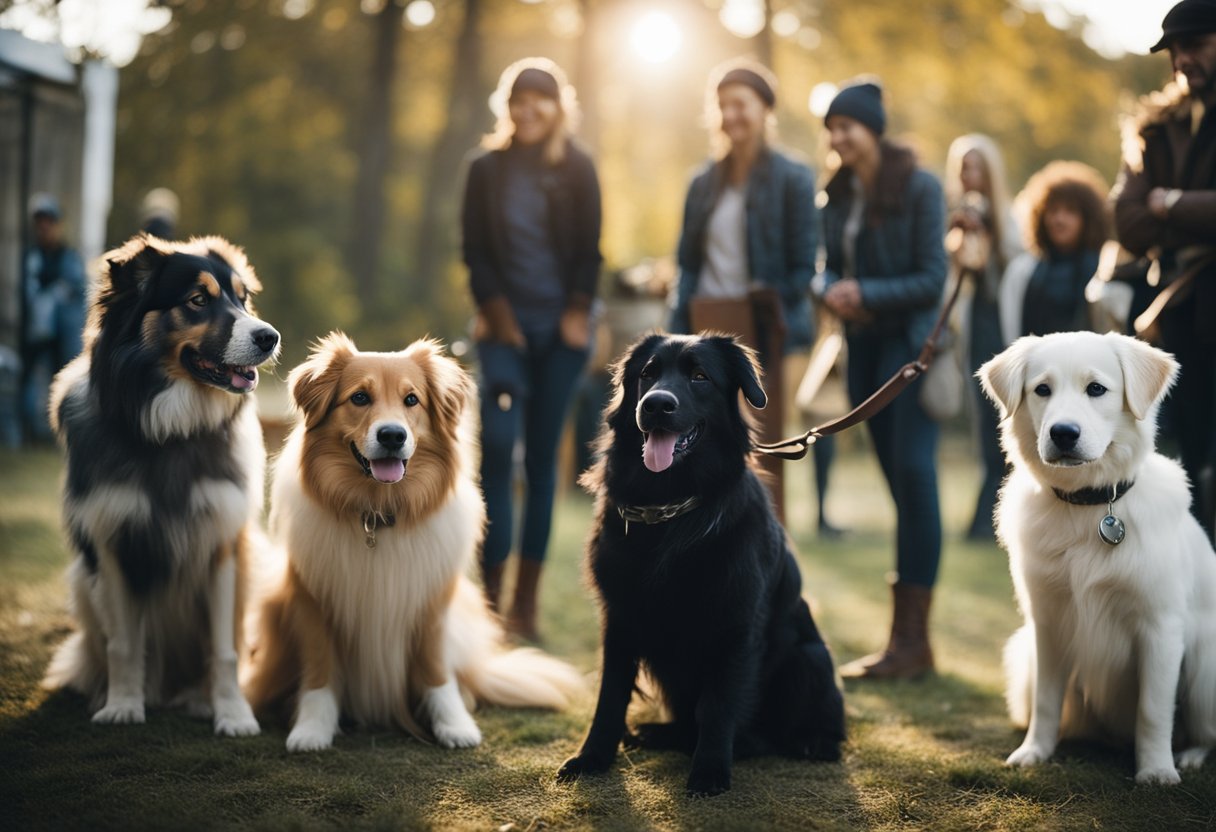
The trainers are tasked with teaching dogs a variety of behaviors and cues that enable them to participate in complex film sequences. This includes everything from the basics of sitting still and barking on command to more complex actions such as mimicking emotions or performing stunts. The welfare of the dog actors is also a top priority, with stringent regulations in place to ensure their safety and well-being during filming. Moreover, post-production techniques can enhance or modify the recorded performance of dog actors, contributing to the magic of movie-making and sometimes even creating fully digital canine characters.
Key Takeaways
- Canine actors require significant training to perform specific behaviors and actions on cue.
- Animal welfare is crucial, with strict regulations ensuring the safety and well-being of dogs on set.
- Post-production techniques often augment the performances of dog actors in the final film.
History of Dogs in Film
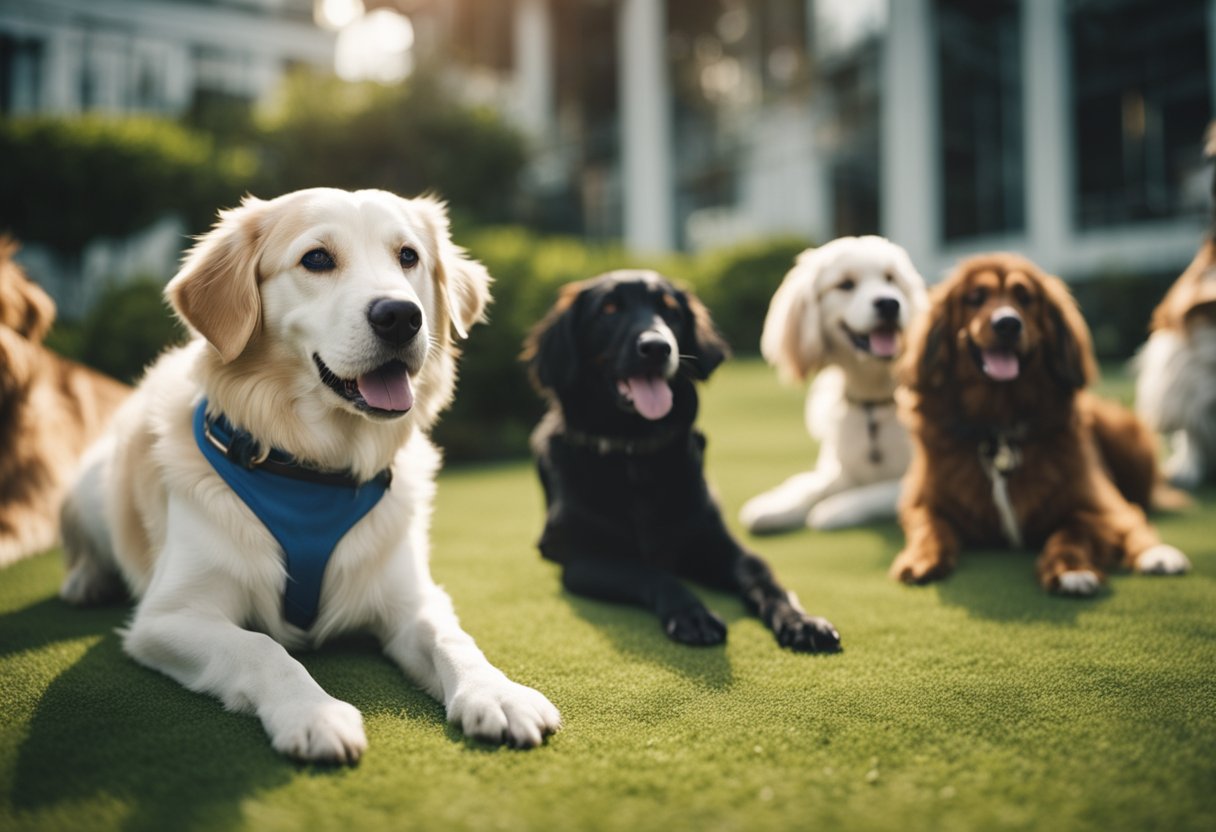
The success of canine stars in film is as much a testament to their trainers as to the animals themselves. With iconic names like Rin Tin Tin and Lassie, dogs have had a significant impact on the history of film, particularly in Hollywood, carving out their own niche in the industry.
Early Canine Stars
Rin Tin Tin is arguably the epitome of the early canine star, rescuing Warner Bros from bankruptcy in the 1920s and becoming an international icon. Starting in silent films, this capable German Shepherd set the stage for future four-legged actors. Lassie, a Rough Collie, debuted in the 1943 movie “Lassie Come Home” and went on to star in several films and television shows, epitomizing the dog as a loyal companion.
Evolution of Dog Roles
As cinema evolved, so did the roles dogs played on the silver screen. Benji, who first appeared in the 1974 film “Benji,” was one of the first dogs to take on more complex, emotional roles that connected with audiences on a deeper level. Today, dogs in Hollywood films are often central characters with narratives revolving around their perspectives, showcasing a broader range of emotions and highlighting their versatility as actors.
Selecting the Right Dog
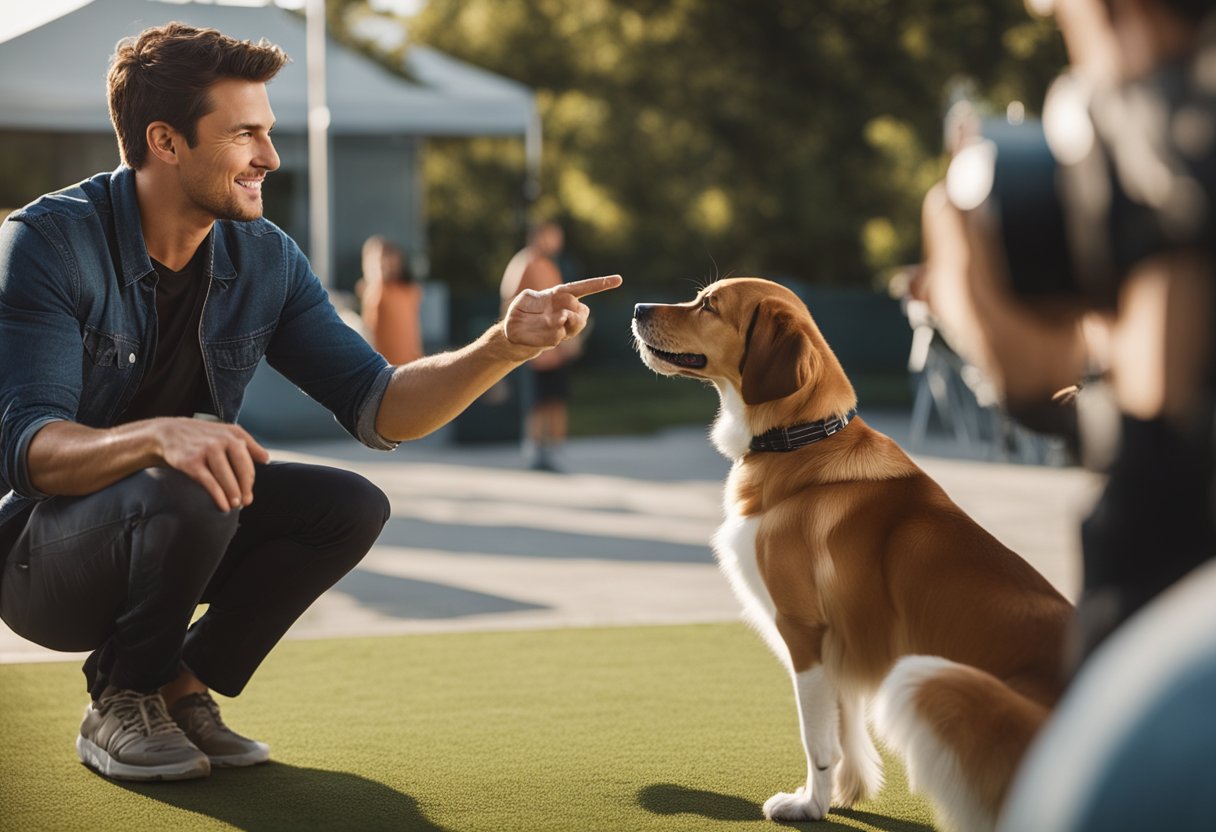
When casting a dog for a movie, a range of factors must be considered to ensure the animal can meet the demands of the role. This involves looking at character requirements, breed-specific traits, and temperament.
Character Requirements
Character demands are paramount in selecting a dog for film roles. If the script calls for a dog to perform complex actions, like fetching items or mimicking emotional cues, one must consider the animal’s ability to learn and execute these tasks. Trainers might be brought in early to assess a dog’s potential and work closely with them to prepare for the role.
Breed-Specific Traits
Certain breeds exhibit traits that may align well with a character’s needs. For instance, Border Collies are known for their intelligence and agility, which can be essential for action-packed roles. On the other hand, a St. Bernard may be chosen for its large, imposing presence if the script requires such a characteristic.
Temperament and Behavior
Temperament is a crucial consideration. A dog that is sociable and copes well under the stress of a bustling film set is more likely to perform reliably. Behavioral consistency is key, as erratic temperament can disrupt production and lead to increased costs and time delays. Casting involves trials to ensure the dog can maintain composure and obedience in diverse scenarios.
Training for Film
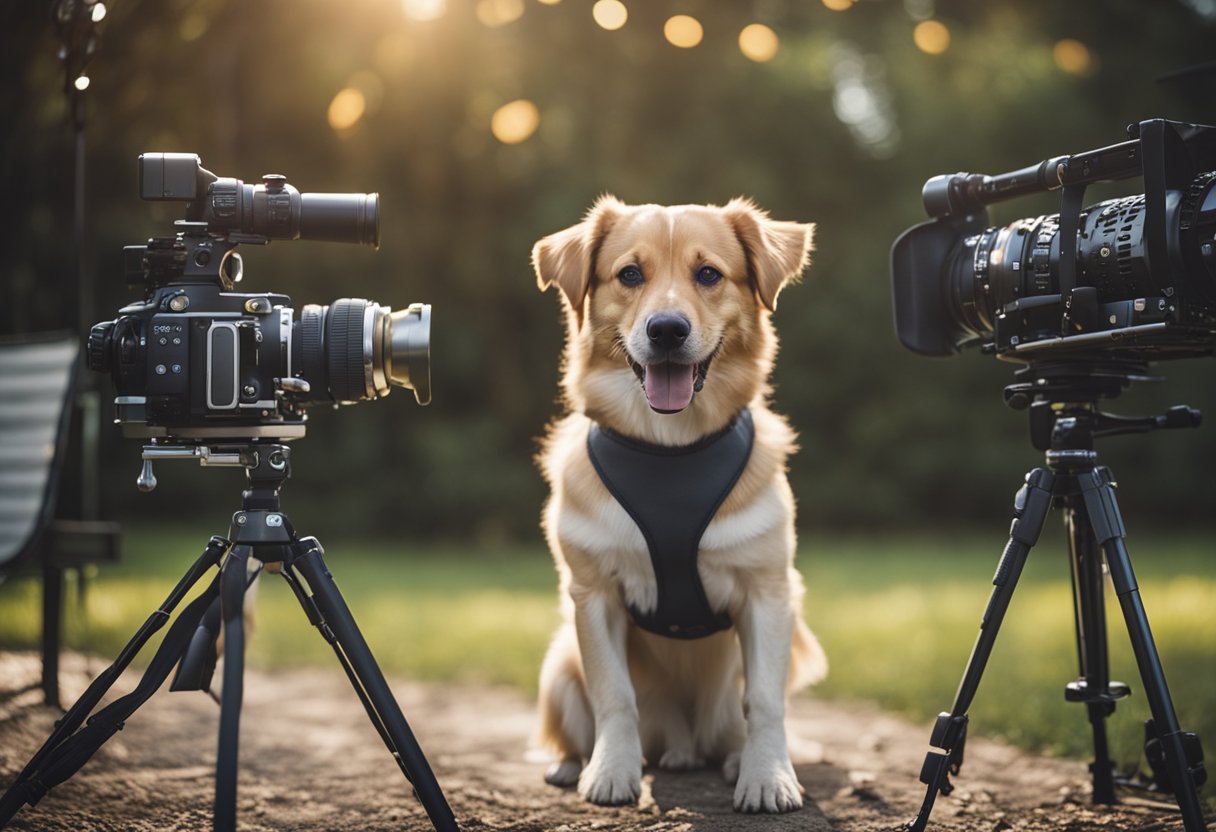
The successful training of canine actors for film requires a progressive approach starting with basic commands, advancing through obedience training, and culminating in the ability to perform complex actions on cue. This process is meticulously crafted by expert trainers who utilize a combination of verbal commands and treats to achieve the desired on-screen behavior.
Basic Training
In the Basic Training phase, dogs learn the fundamental commands such as “sit,” “stay,” and “come.” This provides a strong foundation for more advanced training. Consistency in this stage is key, as dogs respond best to clear and repetitive instruction.
Advanced Obedience
Moving beyond the basics, Advanced Obedience involves teaching dogs to follow more complex commands. This requires patience and increased focus from both the trainer and the dog. During this stage, one might see dogs consistently responding to instructions such as “heel” or “lie down” amidst the distractions of a busy film set.
Performing Complex Actions
Finally, Performing Complex Actions demands a high level of skill and concentration. Dogs are trained to carry out specific tricks or behaviors, such as picking up objects with their mouth or acting alongside human actors. Trainers often use specific treats to reward and encourage dogs when they successfully complete these intricate tasks.
On-Set Dynamics
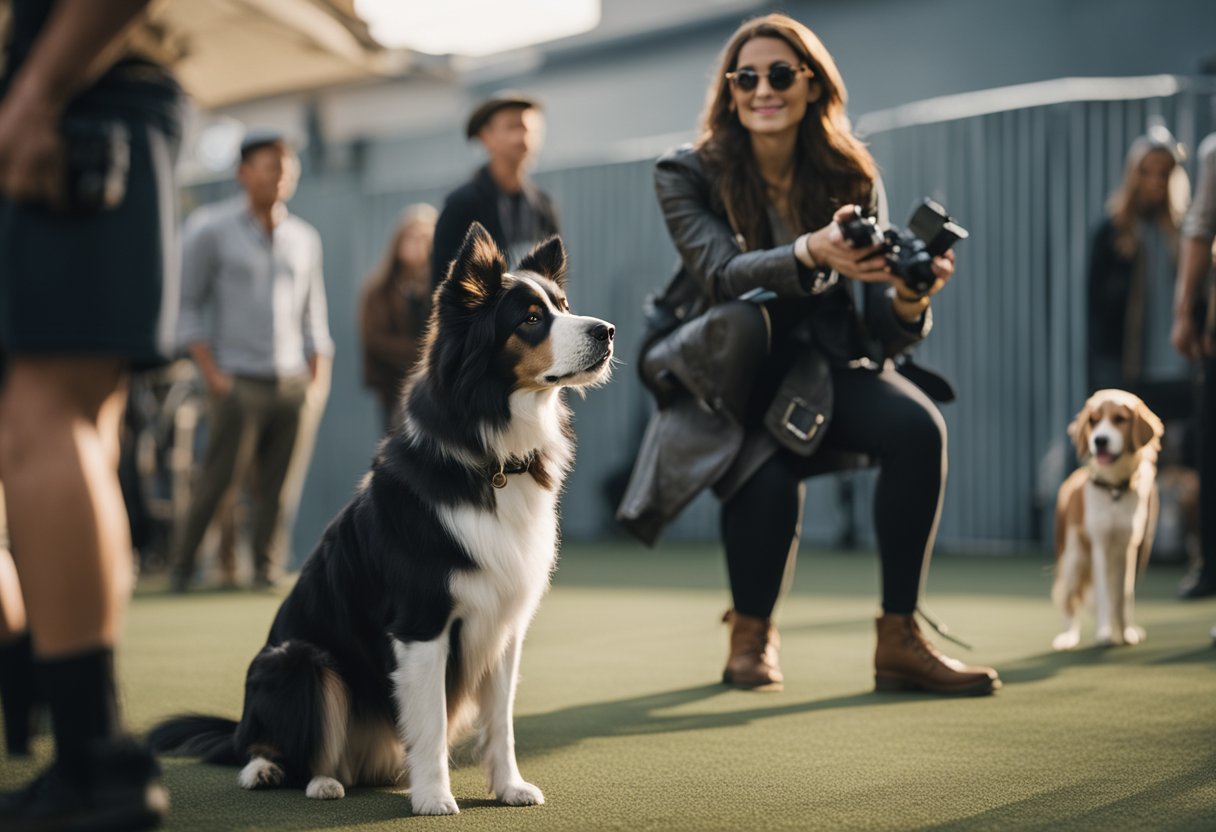
In the high-stakes environment of a film set, on-set dynamics for canine actors center around precise interactions with human actors, appropriate engagement with various props, and keen responsiveness to cues, all of which are critical for a seamless scene.
Interaction with Actors
When working alongside actors, dogs are trained to maintain focus on their human co-stars and to exhibit behaviors that complement the actor’s performance. This collaboration is often achieved through a bond formed during pre-filming rehearsals, allowing for natural and convincing interactions on screen.
Working with Props
Dogs in films frequently interact with props, which may range from simple household items to complex pieces integral to the film’s plot. Trainers ensure that these interactions are not only safe but also appear in-line with the dog’s character, often requiring repeated practice to perfect prop-related tasks.
Responding to Cues
The ability to respond to cues promptly and accurately is essential for a canine actor. Trainers use a blend of verbal commands, hand signals, and other prompts to direct the dog’s actions and keep them engaged throughout the scene, ensuring that their performance aligns with the director’s vision for the film.
Animal Welfare on Set
Animal welfare on set is paramount when animals, such as dogs, are part of a film or television production. Specific attention is given to ensuring the safety of the animals, maintaining their health, and complying with strict legal and ethical standards. Professionals including animal trainers and coordinators are integral to upholding these standards.
Ensuring Safety
Animal Trainers and Animal Coordinators work hand-in-hand to create a safe environment for dogs on set. Measures include preparing the set to prevent escape or injury, familiarizing the animal with the environment, and rehearsing scenes to ensure the dog’s comfort with the actions required.
- Safety Measures: They might include barriers, padded flooring, and controlled temperatures.
- Familiarization: This process involves introducing the dog to the set in a gradual, stress-free manner.
Health Considerations
The health of dogs acting in movies is given priority by having a veterinarian on call and ensuring that the dogs have a balanced diet, rest periods, and are free from distress.
- Dietary Needs: Specific attention to the dog’s diet and hydration.
- Rest Periods: Enforcement of regulated breaks and limiting the time on set.
Legal and Ethical Standards
Productions follow the Federal Animal Welfare Act and guidelines by organizations like the American Humane Association. Animal Coordinators ensure compliance with these regulations, promoting humane treatment.
- Legal Compliance: Adherence to laws governing the use of animals in entertainment.
- Ethical Treatment: Maintaining the dog’s dignity and ensuring humane treatment at all times.
Post-Production and Effects
In the post-production phase, meticulous editing and the judicious use of CGI can enhance or even create performances of animals in film.
Editing for Animal Scenes
Editors play a pivotal role by piecing together the best takes to construct a coherent and emotive performance from the animals. They often work with hundreds of clips for just one scene, selecting moments where the animals’ actions align seamlessly with the storyline. Timing is critical, and editors must sync these clips with the dialogue and reactions of human actors to create the illusion of interactive performances.
Use of CGI Versus Real Animals
The integration of CGI enables filmmakers to depict animals in situations that would be risky, impractical, or impossible to achieve in real life. For instance, a director might opt for a CGI animal to perform stunts or interact closely with actors in ways that real animals cannot safely or predictably do. However, the use of real animals is often preferred for close-up shots or when the physical presence of an animal is essential for the actors’ performances, maintaining authenticity and bringing the warmth of a live creature to the screen. The decision between CGI and real animals hinges on factors like safety, cost, and the desired end effect, a balance that constitutes a significant aspect of the movie magic that audiences experience.
Famous Dog Trainers and Their Methods
The effectiveness of dog trainers in movies is a testament to their skillful approaches and well-honed techniques. Each trainer brings a unique flair to the table, embedding their distinctive methods in the annals of cinematic history.
Teresa Ann Miller’s Approach
Teresa Ann Miller is a highly skilled animal trainer who has continued the legacy of her father, Karl Miller. She emphasizes consistent positive reinforcement and specializes in training animals for precise on-camera work. Her methodology often involves meticulous planning and the breaking down of complex actions into simple, achievable steps for the animals.
Bonnie Judd’s Techniques
Bonnie Judd advocates for an affection-fueled training environment. She ensures her furry actors are treated with love and respect, creating a bond that translates beautifully on screen. Judd’s philosophy rests on trust and positive reinforcement, relying on treats and praises to encourage desired behaviors from the dogs.
Legacy of Karl Miller
The late Karl Miller left an indelible mark on the world of animal training for film. He was known for his capacity to train dogs to perform intricate behaviors seamlessly. His methods were rooted in patience, consistency, and an in-depth understanding of animal psychology, which helped him craft some of the most memorable canine performances in film history.
Impact of Dog Actors on Pop Culture
Dog actors have not only enthralled audiences but have also influenced societal trends and behaviors. Their portrayal in film often transcends the screen, affecting aspects of pop culture such as canine breed popularity and adoption rates.
Iconic Canine Characters
Rin Tin Tin, a German Shepherd, became one of the first canine movie stars, demonstrating remarkable influence in early Hollywood. This dog actor’s legacy paved the way for subsequent canine celebrities and left an indelible mark on pop culture. In contemporary times, the St. Bernard named Beethoven has garnered fame through a series of family-friendly movies, prompting a surge of interest in the breed. These characters have become household names, often being referenced in various media and consumer products.
Influence on Dog Adoption
Movies can significantly impact dog adoption rates. Research has shown that films featuring prominent dog actors can lead to an increase in the popularity of the respective breeds. For example, the release of movies like “Beethoven” has been associated with a boost in St. Bernard adoptions. Conversely, the depiction of certain breeds as menacing, such as the portrayal of Cujo, a St. Bernard turned rabid, could potentially stigmatize those breeds, impacting people’s willingness to adopt them. The phenomenon of on-screen canines affecting dog breed trends underscores the potent influence Hollywood dog actors have on public preferences regarding pet adoption.
Frequently Asked Questions
In this section, readers can discover the essentials about how dogs are trained for film, the preparations they undertake for their roles, the casting process, potential earnings, techniques for depicting speaking dogs, and ensuring their safety during performances.
How are dogs trained for roles in films?
Dogs are trained for movie roles using a series of tailored behavioral commands and positive reinforcement techniques. Trainers build a bond with the canine actors to ensure they perform reliably on set.
What kind of training does a dog go through to prepare for acting?
Training regimens for canine actors often involve teaching them to follow cues from both their trainers and the actors working with them. This includes mastering complex sequences of actions and reactions to various stimuli, ensuring their performance is consistent and controlled.
What is the process for casting dogs in film and television projects?
Casting for dog actors typically involves assessing the dog’s look, behavior, and ability to take commands. Casting directors may work with reputable trainers or agencies to find dogs that have the skills and temperament required for the role.
How much can a dog actor typically earn from a role in a movie?
Earnings for dog actors vary widely based on the project’s budget, the dog’s role, and their screen time. Dogs with lead roles can earn substantial sums, sometimes comparable to human actors in similar roles.
What techniques are used by filmmakers to depict dogs talking in movies?
Filmmakers use a mix of visual effects, computer-generated imagery (CGI), and skilled voice-over actors to create the illusion of talking dogs in movies, ensuring the final product is believable to audiences.
How are dogs safely encouraged to perform actions, like limping, on camera?
Safety is paramount, and dogs are trained using humane methods to perform specific actions such as limping. They mimic these behaviors without causing distress or harm to the animal, often using cues and non-harmful techniques to achieve the desired effect on camera.
